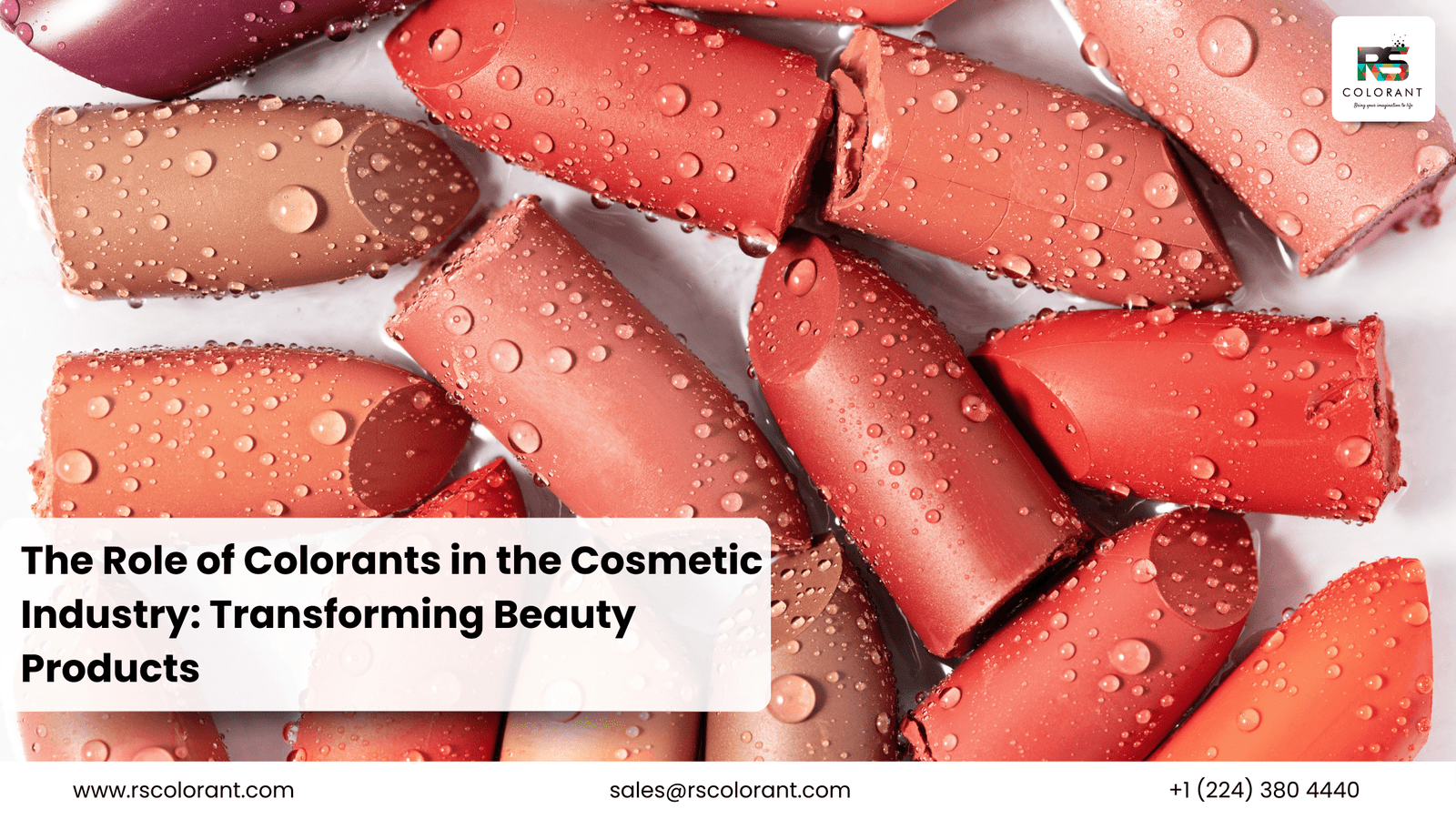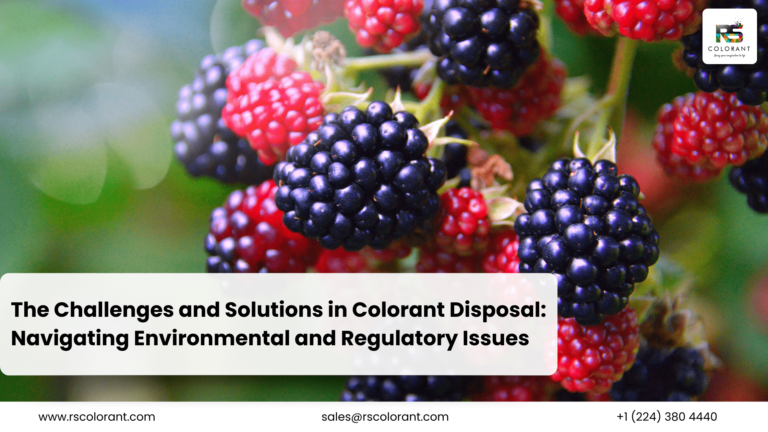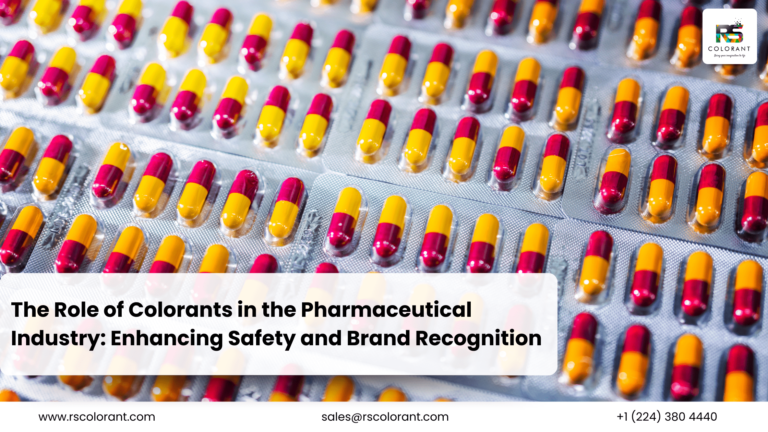The Role of Colorants in the Cosmetic Industry
Introduction
Ever wondered why your favorite lipstick is that perfect shade of red or how your eyeshadow palette offers such vibrant colors? The secret lies in colorants. Color is a pivotal aspect of cosmetics, influencing not only the aesthetic appeal but also consumer preferences and trends. Colorants play a crucial role in creating the allure and identity of cosmetic products.
Understanding Colorants
So, what exactly are colorants? In the simplest terms, colorants are substances used to impart color to other materials. In cosmetics, they are the magic ingredients that transform bland formulas into captivating products. Colorants can be broadly categorized into two types: natural and synthetic.
Natural vs. Synthetic Colorants
Natural colorants are derived from plants, minerals, and other natural sources. Think beetroot extract for a rosy tint or turmeric for a golden glow. On the other hand, synthetic colorants are man-made, often designed in laboratories to achieve specific hues and properties. While natural colorants are praised for their purity, synthetic ones offer a broader range of colors and greater consistency.
History of Colorants in Cosmetics
The use of colorants in cosmetics dates back thousands of years. Ancient Egyptians were pioneers, using crushed gemstones and minerals to create eye-catching makeup. Fast forward to the Renaissance, when cosmetic formulations became more sophisticated, incorporating a variety of natural ingredients. Today, the evolution continues with advanced technologies and a deeper understanding of color chemistry.
Types of Cosmetic Colorants
Organic Colorants
Organic colorants, often sourced from natural origins, are carbon-based compounds. Examples include carmine, derived from cochineal insects, and annatto, extracted from seeds of the achiote tree. These colorants are favored for their vibrant hues and biodegradability.
Inorganic Colorants
Inorganic colorants are mineral-based and include pigments like titanium dioxide and iron oxides. These colorants are valued for their stability, opacity, and broad spectrum of shades, making them ideal for a wide range of cosmetic products.
Lake Pigments
Lake pigments are a special category created by precipitating soluble dyes onto insoluble substrates. This process enhances the color’s stability and intensity, making lake pigments a popular choice for vibrant lipsticks and blushes.
Natural Colorants
Natural colorants are gaining popularity due to their perceived safety and environmental benefits. Common sources include plants, fruits, and minerals. For instance, henna is used for its rich red hues, while spirulina provides vibrant blues and greens. However, natural colorants can be limited by their stability and potential for causing allergies.
Synthetic Colorants
Synthetic colorants, like FD&C dyes, offer a wider array of colors and are highly stable. These colorants are meticulously tested for safety and efficacy. However, there are concerns about potential health risks and environmental impact, prompting a shift towards safer and more sustainable alternatives.
Colorant Safety and Regulations
Safety is paramount in the cosmetic industry. Regulatory bodies such as the FDA in the United States and the European Commission in the EU set stringent guidelines for colorant use. These regulations ensure that all colorants undergo rigorous testing for toxicity, allergenicity, and overall safety before they hit the market.
Application of Colorants in Cosmetics
Makeup Products
Colorants are indispensable in makeup. From the bold pigments in eyeshadows to the subtle tints in foundations, they define the product’s appeal and functionality. Lipsticks, blushes, and nail polishes are prime examples where colorants shine.
Skincare Products
Even skincare products utilize colorants, though subtly. Tinted moisturizers and BB creams combine skincare benefits with a touch of color, enhancing the user’s natural complexion.
Hair Care Products
Hair dyes and shampoos also rely heavily on colorants. Whether it’s a temporary color rinse or a permanent dye, colorants help achieve the desired look and cover grays effectively.
Trends in Cosmetic Colorants
The cosmetic industry is witnessing a shift towards natural and organic colorants. Consumers are becoming more conscious of what goes into their beauty products. Additionally, innovations like microencapsulation technology and biodegradable pigments are paving the way for safer and more sustainable options.
Color Psychology in Cosmetics
Color isn’t just about aesthetics; it’s also about psychology. Different colors evoke different emotions and perceptions. For example, red is often associated with passion and confidence, while blue signifies calm and trust. Understanding color psychology helps brands connect with consumers on a deeper level.
Formulation Challenges
Creating the perfect cosmetic product is no easy feat. Formulators must consider the stability and compatibility of colorants with other ingredients. Achieving the desired shade, ensuring it remains consistent over time, and preventing color fading are some of the key challenges faced in cosmetic formulation.
Environmental Impact of Colorants
The environmental impact of colorants is a growing concern. The cosmetic industry is moving towards eco-friendly colorants and sustainable practices. Biodegradable and plant-based colorants are being explored to reduce the environmental footprint of cosmetic products.
Future of Colorants in Cosmetics
The future of colorants in cosmetics looks promising with continuous advancements in technology. Innovations like lab-grown pigments, smart color-changing cosmetics, and AI-driven color matching are set to revolutionize the industry. As consumer awareness grows, the demand for safe, sustainable, and high-performing colorants will shape the market.
Consumer Awareness and Preferences
Educating consumers about the ingredients in their cosmetics is crucial. With the rise of social media, consumers are more informed and vocal about their preferences. Brands that prioritize transparency and sustainability are likely to gain a competitive edge.
Conclusion
Colorants are the unsung heroes of the cosmetic industry, transforming ordinary products into extraordinary experiences. From ancient times to the modern era, the journey of colorants has been fascinating and dynamic. As the industry evolves, so will the technologies and trends surrounding these essential ingredients.
FAQs
What are the most common natural colorants used in cosmetics?
Common natural colorants include beetroot extract, henna, turmeric, and spirulina. These are derived from plants, minerals, and other natural sources, offering vibrant and safe options for cosmetic formulations.
Are synthetic colorants safe for use in cosmetics?
Yes, synthetic colorants are safe for use in cosmetics when they meet regulatory standards. They undergo extensive testing for toxicity, allergenicity, and safety to ensure they are suitable for consumer use.
How do regulatory bodies ensure the safety of cosmetic colorants?
Regulatory bodies like the FDA and European Commission establish guidelines for testing and approving colorants. These guidelines ensure that all colorants used in cosmetics are thoroughly evaluated for safety before they reach consumers.
What is the future of colorants in the cosmetic industry?
The future of colorants in the cosmetic industry includes advancements in sustainable and eco-friendly options, innovative technologies like smart color-changing cosmetics, and greater emphasis on transparency and consumer education.
How can consumers make informed choices about the colorants in their cosmetics?
Consumers can make informed choices by reading ingredient labels, researching the safety and environmental impact of colorants, and choosing products from brands that prioritize transparency and sustainability.




